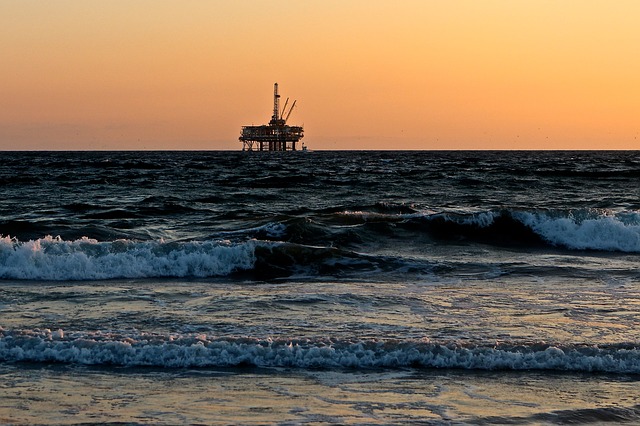Recent Offshore Discoveries in the Gulf of Mexico

Estimated reading time: 4 minutes

Gulf Of Mexico & Its Continental Margins
The rise of recent offshore discoveries highlight why operators are focusing on the Gulf of Mexico recently for their offshore wells and rigs. As of January 2018, the Gulf of Mexico has 175 offshore rigs – second to the North Sea which has 184 offshore rigs.
Hydrocarbon exploration in the Gulf started in 1847, where the first well produced over 600 bopd of oil. Since then, exploration and production has increased dramatically as companies moved towards offshore and away from the coast. The advancements in platform and drilling technology such as 3D seismic technology, helped companies reach deeper waters and locate commercial fields that they were unable to be spotted before.
The Gulf of Mexico is an ocean basin and connected to part of the Atlantic Ocean through the Florida Straits. It is between the US and Cuba, and with the Caribbean Sea between Mexico and Cuba. In other words, the basin countries include US, Mexico and Cuba.
The Gulf faced a deep water exploration boom in the late 1990s, where the OCS Deep Water Royalty Relief Act of 1995 provided incentives for operators to develop fields in water depths greater than 200m and had a significant impact on deep water activities. It led to a huge expansion for the industry, with oil production from deep water rose over 840% in the last decade, and deep water gas production increased about 1,600% during the same period.
Since then, the Gulf of Mexico has been a rising hotspot for hydrocarbon exploration. WoodMac reported that after four years of steady decline, exploration activity in the Gulf is expected to increase in 2019 by 30%. Big oil companies such as Shell and Chevron will lead the way, but the actual growth in exploration will come from new entrants – Murphy Oil Corp, Byron Energy Ltd and Talos Energy LLC.
Here are the top 12 recent Gulf of Mexico discoveries:
| Prospect, Field, Block | Well | Ft. of net pay/production | Operator | Depth (ft) |
| Samurai, Green Canyon Block 432 | 2OCS G32504 | 150 ft of net pay (two Miocene zones) | Murphy Oil Corp. | Drilling 32,000 ft |
| Mississippi Canyon Block 612 | 1 (BP) OCS G33166 | 800 ft of net pay (Norphlet) | Shell Oil Co. | Drilling 29,600 Water: 7,300 |
| South March Island Block 71 | 1-F OCS G34266 2-F OCS G34266 |
4 Mbbl of oil/d (combined from Pliocene sands) | Byron Energy Ltd. | n/a |
| Ballymore, MIssissippi Canyon Block 607 | 1(ST) OCS G3451 | 607 ft of net pay (Miocene) | Chevron Corp. | Drilling: 29,194 Water 6,600 |
| South Marsh Island Block 71 | 3-F OCSG34266 | 211 net ft of oil pay | Byron Energy Ltd. | Water: n/a Drilling: 8,615 |
| Whale, Alamonos Canyon Block 772 | 1(BP) OCS G35153 | 1,400 net ft of oil-bearing pay | Shell Oil Co. | Water: n/a Drilling: 22,948 |
| Pompano platform, Mississippi Canyon Block 28 | 4 OCS G09771 | 153 ft of net oil pay | Stone Energy Corp. | Water: n/a Drilling: 12,176 |
| Tornado, Green Canyon Block 281 | 2SS (ST) OCSG3342 | 12.35 Mboe/d (83% oil) | Talos Energy LLC | Water: 2,750 Drilling: 21,057 (tvd) |
| Ship Shoal Block 300 | 5-B (ST) OCS G07760 | 173 ft of hydorcarbon pay with peak flow of 1.1 Mboe/d | W&T Offshore | Water: n/a Drilling: 5,772 |
| Tornado, Green Canyon Block 281 | 2SS (ST) OCS G33242 | 297 net ft of oil pay | Talos Energy LLC | n/a |
| Rampart Deep, Mississippi Canyon Block 117 | 1 OCS G32299 | 130 ft of liquids-rich pay | Deep Gulf Energy Co. | Water: 2,700 Drilling: n/a |
| Constellation, Green Canyon Block 627 | 3SS OCS G25174 | 120 ft of net pay | Anadarko Petroleum Corp. | Water: 4,400 Drilling: n/a |
Data source: IHS Markit. Compiled by Larry Prado (Hart Energy)
The Gulf of Mexico and its Continental Margins is a 3-day training course held on 23-25 September 2019 where the course presents a state-of-the-art assessment of what we know and don’t know in terms of basin evolution, and highlights some of the problematic issues facing hydrocarbon exploration in the Gulf of Mexico. Materials are from the trainer’s own history of industrially-funded research consortia programs and interpretation for ION Geophysical. A series of exercises complements the lectures to form a well-rounded, three-day examination of the western hemisphere’s most important oil province. The course is also an excellent example of the application of plate tectonics in the understanding of basin history.

